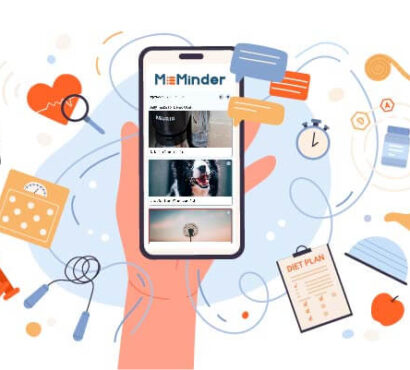Everyone deserves the right to control their own lives and to experience the intrinsic value of making their own decisions, including people with intellectual developmental disabilities (IDD). In fact, “independence” for people with IDD can mean anything from being able to pick out their own clothing – to needing less supervision – to being able to live independently in their own home. While it is the job of the family member and/or care provider to assess the potential of the person being served, achieving their idea of independence is not an overnight process. They must be educated and empowered to make their own decisions, visualize options, and understand consequences in everyday life.
Relias has developed “6 Building Blocks for Empowering People with IDD” which provides an organized roadmap to decision-making for both the care provider and the consumer with IDD. They are as follows:
1.) Increasing Life Experiences: Letting the person served experience different social settings, scenarios and responsibilities.
2.) Building Self-Esteem: providing positive reinforcements for successes in new experiences.
3.) Developing Assertiveness: learning to be confident in both communications with others and ability to accomplish the day’s responsibilities.
4.) Enhancing Capabilities: Working with the person being served to identify and build on natural strengths and skills.
5.) Providing Choices: Stepping outside of the normal routine and having options on things like what to wear, what to do with free time, what to have for a meal, what needs to be done for the day, etc.
6.) Maximizing Support: In consecutive order: Guided facilitation, Direct and immediate intervention, and eventually, no direct intervention.
Realistically, no care provider can watch over their client 24/7. It also defeats the entire purpose of the independence goal for the person being served. The right Assistive technology can give the care provider transparency into what is happening in the life of the person they serve when they are not present to supervise. Alternately, assistive technology matched to the consumer can help them stay on track and more confident about being able to handle new experiences and responsibilities.
Below is look at the “6 Building Blocks” in teaching people with intellectual developmental disabilities decision-making skills – and how assistive technology benefits both the consumer and care provider in the process:
With Assistive Technology
Increasing life experiences: Consumer – as they are experiencing new things, assistive technology helps them from being overwhelmed with huge lists of to-dos, organizes tasks in order they need to accomplish them; Care provider: allows care provider more time to identify and administer priorities/less time hovering and offering constant verbal instruction, which can be intrusive/frustrating for client.
Building self-esteem: Person being served AND care provider – assistive technology provides positive reinforcement in times that care provider is not directly supervising. Care provider can see progress and reward for accomplishments that happened when consumer was on their own.
Developing Assertiveness: In addition to helping the consumer with a talking check list to help them accomplish the day’s responsibilities, MeMinder can help the person being served rehearse various strategies and tactics to help them to be more confident in communicating with co-workers, supervisors or their care team.
Enhancing capabilities: Person being served – Has access to instructions to identified daily tasks when care provider is not with them. They can receive instructions in the format that they need to understand. Care provider – Has more visibility into daily progress and setbacks and focus on developing areas that need improvement.
Providing Choices: MeMinder can also help the person being served review their options as it relates to what to wear (blue jeans go with just about everything); free time (favorite music or videos, call a friend, etc.); favorite food; in addition to the normal list of chores or jobs for the day.
Maximizing supports: Some assistive technologies, like MeMinder, are designed for fading which means task instructions are offered in different formats. Ultimately, the goal of fading is that the person being served will learn each task and be able to “fade” away from use of the technology. (Or fade out of learned tasks and into new ones.) For the care provider, using assistive technology is detrimental to providing non-intrusive support when they enter the final “no direct intervention phase”. It can, at the very least, reduce anxiety; knowing the person being served still has a resource for information in their absence.
While technology is never meant to be a total replacement for human guidance and interaction, it is an extremely effective aid for people with intellectual disabilities who desire less supervision and are learning to make their own decisions. Should you have any questions about the use of assistive technology with the persons you serve, please do not hesitate to email us at info@createabilityinc.com.
Related article:
https://www.relias.com/blog/6-building-blocks-of-empowerment-in-idd



